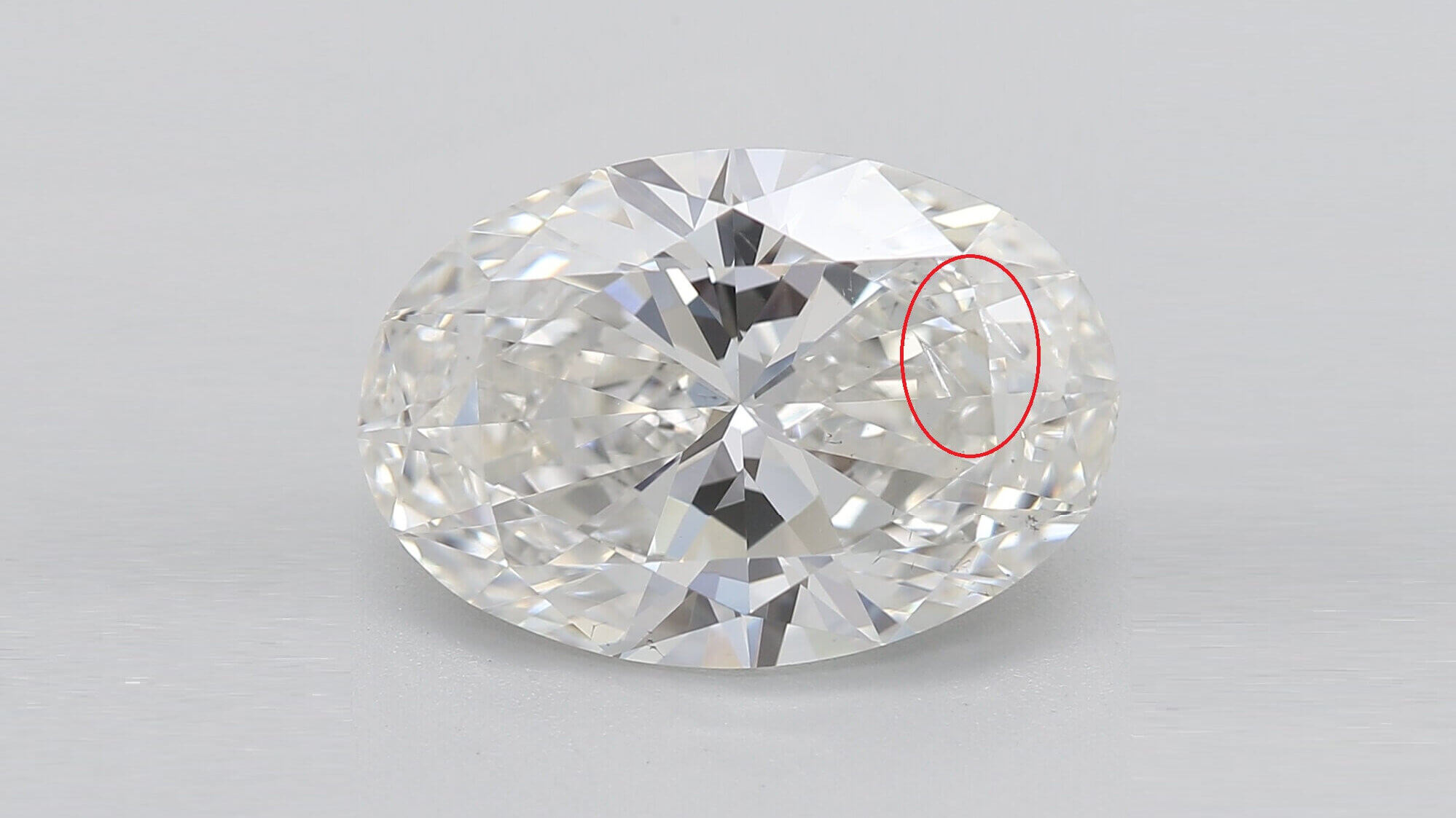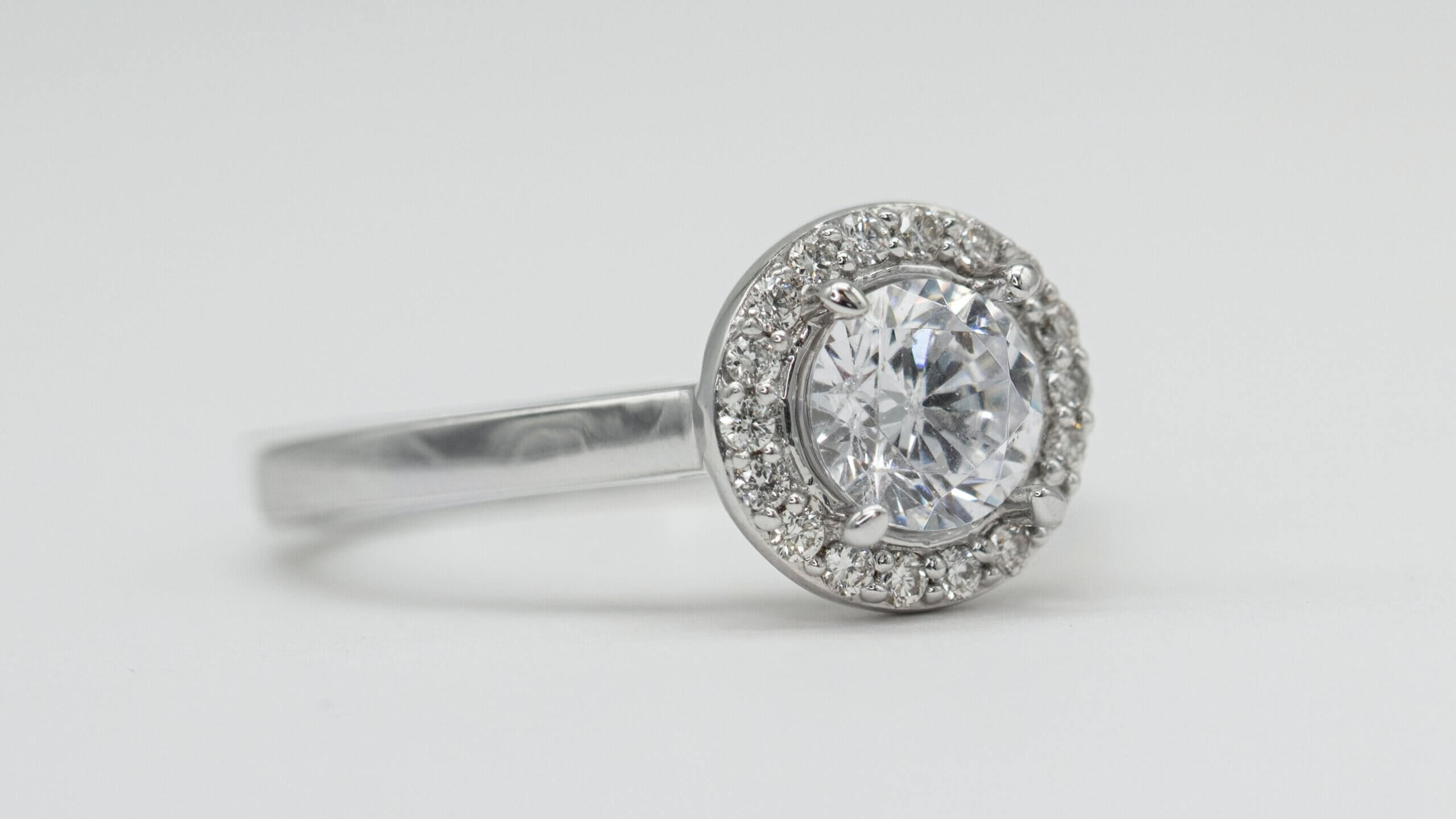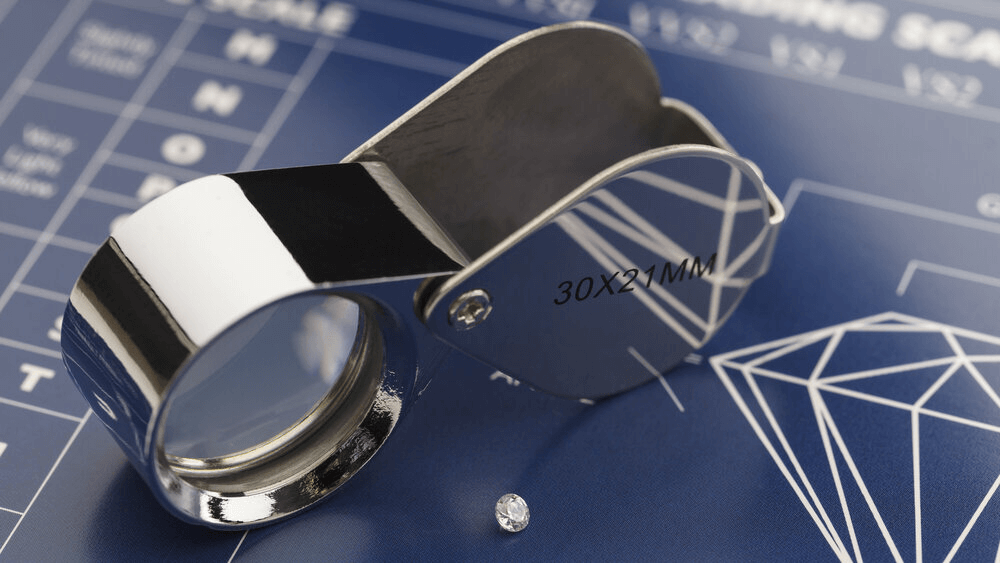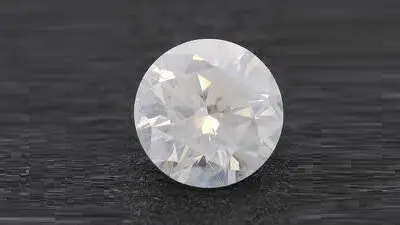The Surprising Facts About Diamond Feathers

By Gary A.

Edited by Olivia H.
Published Sep 24, 2021
Edited on Dec 18, 2024
When considering clarity, diamond feathers can often be a minor yet intriguing aspect that adds character, but how do they really affect the beauty and value of your stone?

Navigate This Guide:
- 7 Quick Tips for Examining Diamond Feather Inclusions
- Introduction
- Understanding Diamond Feathers
- The Impact of Feathers on Diamond Quality
- What You Should Know Before Buying a Feather Diamond For a Ring
- Our Expert Take
- 7 FAQs
Before we dive deeper into the specifics, here are some practical tips to help guide your decision-making process:
7 Quick Tips for Examining Diamond Feather Inclusions
- Tip 1: Understanding Feather Inclusions in Detail Research and Knowledge: Gain a thorough understanding of what feather inclusions are. These are internal fractures in a diamond that look like feathers. Familiarize yourself with how they appear and their typical locations within a diamond.
- Tip 2: Clarity Grade Evaluation Clarity Grade Consideration: Pay close attention to the diamond’s clarity grade. While feather inclusions are common in lower-grade diamonds, they can still appear in higher grades. Remember, the higher the clarity grade (like VS1 or VVS2), the less likely the diamond will have noticeable feather inclusions.
- Tip 3: Magnification Inspection Using Magnification Tools: Always inspect the diamond under magnification. This helps in spotting feather inclusions that are not visible to the naked eye. Look for any cracks or fissures that may affect the stone’s integrity.
- Tip 4: Assessing Feather Location and Size Location and Size Matters: Evaluate the size and location of feather inclusions. Larger feathers or those near the edges (like near the girdle) can affect the diamond’s durability. Small and centrally located feathers are typically less concerning.
- Tip 5: Analyzing Light Performance and Brilliance Light Performance Check: Observe how light passes through the diamond. Significant feather inclusions can disrupt light flow, affecting the diamond’s brilliance and fire. Ensure the diamond maintains its sparkle and doesn’t have areas of darkness or dullness due to inclusions.
- Tip 6: Understanding the Impact on Long-Term Durability Long-Term Durability Consideration: Consider how feather inclusions might impact the diamond’s longevity. Inclusions reaching the surface or located at points of high stress can increase the risk of future damage or cracks.
- Tip 7: Comparing Multiple Stones Comparative Analysis: Don’t hesitate to compare multiple diamonds. This can give you a better perspective on how feather inclusions vary and what is acceptable for your preferences and budget.
Now that you’ve got these practical tips, use Jeweler AI below to find the perfect engagement ring that suits your style and budget:
Introduction
When we talk about diamond clarity, and the presence or absence of visible inclusions, it’s convenient to lump them all together under that one umbrella term. After all, when we’re aiming for eye cleanliness, it doesn’t matter what inclusions a diamond has, provided they remain invisible to the naked eye, right?
For this reason alone, it can be pretty surprising for people when they first learn about quite how many different types of inclusions a diamond can have. From minute crystals of other substances to fissures within the diamond’s structure, like the feather itself, it’s pretty handy to know the basics of some of the most common types of inclusion – namely, what they are, and how they can impact the look and strength of a diamond.
Understanding Diamond Feathers
Like many other types of inclusions, a diamond feather inclusion can be incredibly small – too small, even, to see without 10x magnification. They can also be white in appearance, and this helps them to be very easily concealed within the diamond – particularly if they occur towards the edge (without actually reaching it), rather than the table at the stone’s center.
Unfortunately, however, there are times when a feather is large enough to be seen – or even to overwhelm the entire diamond, and threaten its durability.
In some cases, the feather can appear as a much darker line running through the diamond – and, when this happens, light performance (sparkle) can be negatively impacted.
The Nature and Formation of a Feather in a Diamond
A feather is a common type of inclusion that occurs naturally within diamonds during their development. It is a fracture (internal break) characterized by frayed, ‘feathery’ edges, which give it its name.
The huge pressure shifts a diamond is exposed to throughout its formation mean that small, almost microscopic breakages occur beneath the surface. A diamond’s internal structure is known as a crystal lattice. It’s very strong, but not always strong enough to withstand tectonic activity. Imperfections in this crystal lattice appear as feathers.
Is a Feather Inclusion in Diamond Common?
Yes and, most of the time, you won’t even notice they are there. Alongside clouds, crystals and pinpoint inclusions, feathers are some of the most common flaws out there.
Once you start looking more closely at diamonds currently on the market, you will start to notice how common feather in diamond inclusions really are. In any GIA report, a diamond’s inclusions are meticulously plotted within a diagram. Feathers will be demarcated by a short, wavy line – even if the diamond is eye clean.

The Impact of Feathers on Diamond Quality
Most of the time a feather is totally fine, although significant feathers can impact not only the beauty of the stone – but also its strength. The clarity characteristics feathers have on a diamond are variable.
Most feathers mean very little for a diamond, and aside from lowering their clarity grade – and, as a result, their market value – whether or not it has a feather will be pretty much irrelevant to the diamond’s future wearer.
In some instances, however, a feather inclusion can undermine the structural integrity of the stone. If it’s positioned close to the surface, then the diamond can be more vulnerable to breaking – particularly if it’s worn on a prominent place, such as the finger. In extreme cases, the term ‘feather’ can be a little misleading, as it suggests something less worrying than a crack within the diamond.
You should be particularly wary if the diamond features a large feather very close to the diamond’s girdle, as a hard knock could very easily cause a fracture in this precarious position to grow larger. Even a small feather, if it reaches the very edge of the diamond, should be avoided.
These diamonds will be given a very low clarity grade, however, and provided you stick to eye clean diamonds, you won’t be at risk of looking down to find your diamond chipped or broken.
Do Feathers Affect Sparkle?
It’s certainly possible, but only if they’re significant enough to impact the diamond’s appearance.
We’re not talking about what the diamond looks like under magnification, but, instead, what it looks like outside of the grading lab. This is the most important test of all since it’s the only way you’re going to be able to decide whether or not the diamond is eye clean.
Diamonds of this quality don’t miss out on sparkle because of a few minute inclusions, only visible to a skilled grader under 10x magnification.
If a diamond is low on brilliance or fire, then the chances are that it’s suffering from a poor cut – for instance, a low table percentage or a high depth percentage – rather than a few minor feathers, pinpoints, or clouds.
Yes, inclusions can impact sparkle, but if you’re reserving your interest for eye clean diamonds only, a few minor feathers won’t prevent it from producing an abundance of brilliance and fire.
Choosing the Right Feather Inclusions
Many, many diamonds on the market today feature feathers. They are, however, much more common sights in GIA reports than they are in the diamonds themselves since very few of us choose to appreciate diamonds on a microscopic level – and for good reason.
If they’re too small to be seen with the naked eye, then inclusions are totally irrelevant to the beauty of your engagement ring, and no one you show it to is going to ask to check the GIA report for how many microscopic inclusions it features. As a result, the decision to save up and invest in an internally flawless diamond is far worse than the decision to focus your search on the wide and varied world of eye clean diamonds. There’s nothing inherently wrong with feather diamond rings.

What You Should Know Before Buying a Feather Diamond For a Ring
It is still a good idea – if you can – to work out the precise location of your diamond’s feathers, since the diamond plot included in your GIA report is not detailed enough to pinpoint how close to (or far from) the diamond’s edge the feathers are.
Anyway, in most cases, an eye clean diamond will offer plenty of reassurance over the value of your diamond – and its durability. Besides, a reputable jeweler wouldn’t attempt to sell you a diamond that was at risk of cracking further during routine wear and tear so, provided you choose to buy from a trusted online source, you don’t need to worry yourself over some minor feathers in diamonds.
At WillYou, our expert diamond checking process takes into account the diamond’s GIA report, but also the diamond’s visual appearance and its value for customers. If a diamond has any issues with structural integrity, we won’t add it to our collection – and we certainly won’t recommend it as a good choice for your engagement ring.
Our Expert Take
Should you be laid back about feather inclusions in diamonds? Absolutely, provided it’s eye clean, features an Excellent or Very Good cut grade, and visually colorless. So, yes – if the diamond you’re falling for features feather inclusions only visible within the GIA report, don’t take it as a negative. Take it as a sign you’re making a strong investment, and creating a beautiful engagement ring for your future bride.
7 FAQs
- Q1: What exactly are diamond feathers?
- A1: Diamond feathers are small fractures or cracks within a diamond. They are natural occurrences and can vary in size and visibility, often looking like feathery lines under magnification.
- Q2: Do diamond feathers affect a diamond’s overall value?
- A2: Yes, they can. Larger or more visible feathers can lower a diamond’s clarity grade and hence its value. However, smaller, less visible feathers may have minimal impact on the diamond’s quality and worth.
- Q3: Can feather inclusions in diamonds get bigger over time?
- A3: Generally, feathers do not grow or change size with normal wear. However, a diamond with significant feathering can be more susceptible to damage, which might worsen the inclusion.
- Q4: How do feather inclusions compare to other diamond flaws?
- A4: Feathers are internal flaws, unlike surface blemishes. They are typically more significant than pinpoint inclusions but less noticeable than large clouds or dark crystals.
- Q5: Are feather inclusions visible to the naked eye?
- A5: It depends on the size and location of the feather. Many feathers are not visible without magnification, but larger or more centrally located feathers might be seen with the naked eye.
- Q6: How can I evaluate diamond feathers when purchasing an engagement ring?
- A6: Look for diamonds with certification from reputable labs like GIA, which include details about feather inclusions. Choose stones where feathers are less visible or positioned where they don’t impact the stone’s beauty.
- Q7: Is there a way to fix or reduce the visibility of feather inclusions?
- A7: Some feathers can be masked through clarity enhancement techniques, like laser drilling or fracture filling, but these methods can affect the diamond’s integrity and value.
Discover the nuances of diamond feathers with Jeweler AI – your perfect partner in choosing an engagement ring that truly resonates with quality and clarity.
FOLLOW-UP GUIDE SERIES





















